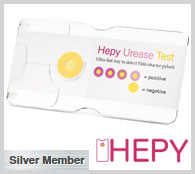High Aldolase Levels Indicate Muscle or Liver Damage
By LabMedica International staff writers
Posted on 30 Oct 2009
A new aldolase assay is aimed at diagnosing patients who have muscle or liver damage.Posted on 30 Oct 2009
Aldolase is an enzyme that helps convert glucose into energy and is found throughout the body but is primarily found in high levels in muscle tissue. Elevated levels in the bloodstream can indicate a patient that has muscle or liver damage.
When the muscles are diseased or damaged, such as in muscular dystrophy, the cells deteriorate and break open causing the contents of the cells, including aldolase, to spill into the bloodstream. Aldolase is also found in the liver and cardiac muscle of the heart. Damage or disease to these organs, such as chronic hepatitis or a heart attack, will also increase aldolase levels in the blood.
Measuring the amount of aldolase in the blood indicates the degree of muscle damage. The Randox (Crumlin, UK) aldolase test is for the quantitative determination in serum or plasma and can be run manually or on the Randox RX series or on other automatic and semi-automatic analyzers.
Randox develops, manufactures, and markets clinical diagnostic products worldwide. Core products include: biochip array technology; clinical chemistry analyzers and reagents; and quality controls; recombinant proteins and antibodies.
Related Links:
Randox














